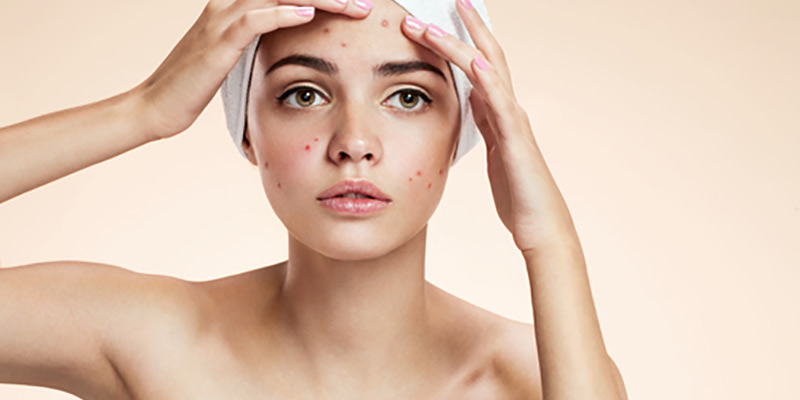What to Do About a Pimple
We’ve all been there at some point in our lives. You wake up and look in the mirror and see a pimple rearing its ugly head, just in time for an important event. While picking at, scratching or even squeezing pimples the wrong way can lead to scarring, sometimes if you’re in a pinch, popping a pimple just has to be done. But if you are going to do it, make sure you pop it the correct way so that you don’t worsen the situation. And for a more permanent solution, know that a visit to your dermatologist is in order.
How to Pop a Pimple
It’s okay to pop pimples, as long as you do it correctly. Only pimples with clearly defined yellow-white centers are safe to pop. Before you get started, be sure to wash your hands carefully. Next, hold a warm washcloth over the pimple for three to five minutes, and then gently press two cotton swabs on either side of the pimple, as you don’t want to risk introducing any dirt or bacteria from your hands to the pore. (Your fingernails have been shown to be a source of many germs).
Most importantly, know when to stop. If the pimple doesn’t pop with gentle pressure, stop trying. If you force a pimple that’s not ready, the bacteria and debris is pushed deeper into the skin which increases the risk of forming a cyst or scar. Finally, apply a salicylic acid spot treatment to the affected area and leave it alone to begin healing. Wait 12 hours and after a hot shower try again. Repeat this process and be patient. If you follow this advice the pimple will heal so must faster than if you scrape it off with your fingernails.
When to See a Dermatologist
If acne is an ongoing problem, or if it has led to scarring, it is time to see a dermatologist. Keep in mind, too, that acne is more than just “pimples.” There are actually six different components of acne. Some people may only experience one of these lesions, whereas others may have more than one of these six types of acne lesions:
Blackheads: Also called open comedones, blackheads are most common in the T-zone. Because they are “open,” the black appearance is due to oxidation of the oil when it’s exposed to the air.
Whiteheads: Also called closed comedones, whiteheads are similar to blackheads but remain white because the hair follicle is “closed” and not exposed to the air.
Papules: This type of blemish is red, raised, solid, and up to a half-centimeter wide.
Pustules: These acne lesions are red bumps that are filled with fluid or pus.
Cysts: Acne cysts are red, raised bumps filled with pus or fluid that extend deep into the skin.
Nodules: Nodules are large, painful, solid lesions that extend deep into the skin.
If you’re struggling to manage any of these types of acne, please check with your dermatologist about the best possible treatment options for your unique situation. These treatments might include:
Topicals: Mild to moderate acne is best treated with topical over-the-counter or prescription medications that are applied directly to the skin. Ingredients such as salicylic acid, benzoyl peroxide, antibiotics and retinol are the most common.
Oral medications: Antibiotics, birth control pills, spironolactone and isotretinoin are commonly prescribed for more severe cases of acne.
Light treatment: Blue light is often used in conjunction with topical and oral medications to minimize the P. acnes bacteria that causes acne.
These various acne treatments can be mixed and matched to address your unique case, so it is important to work with your dermatologist to determine the most appropriate treatment solution for your skin. Complying with you dermatologist’s suggestions is essential for improvement and the prevention of scarring. Keep in mind it can take four to eight weeks to see results, so even if you’re not seeing immediate improvements, continue to follow the guidelines outlined by your dermatologist. Once your acne is clear, your doctor will put you on a maintenance regimen to help keep your skin clear and healthy.
Dr. Leslie Baumann, M.D. and her team at Baumann Cosmetic Dermatology believe in proof, not promises. World-recognized for both cosmetic and general dermatology, our treatment strategies rely exclusively on evidence-based, scientifically verified products and procedures that promote skin health and a natural appearance. We combine effective medical procedures with individualized instruction on proper skincare, nutrition, supplementation and lifestyle in order to maximize the health of the skin and body as a whole while minimizing the effects of aging. For more, visit Dr. Baumann’s blog for daily updates Monday through Friday, or inquire about an appointment through Derm.net.



